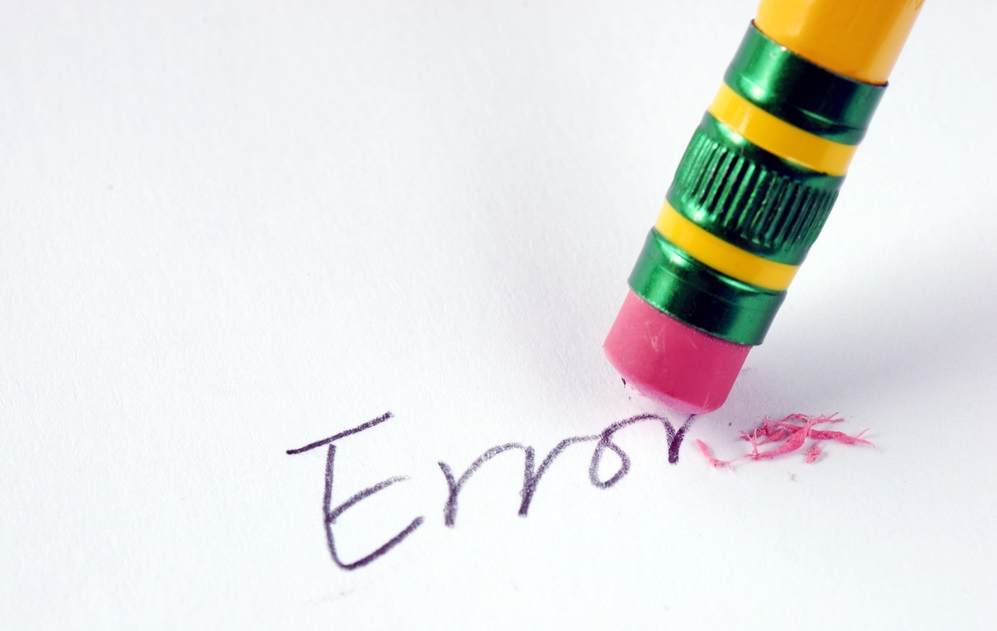In honor of National Grammar Day 2015, American Journalism Review decided to offer self-help advice for reporters who increasingly are being asked to file stories without copy editors. Not only are some news organizations downsizing their copy desks for regular news stories, but many are expecting journalists to post quickly, without editing safety nets, for newer publishing platforms including blogs and social media.
So we interviewed a few copy editors to see what tips they might offer on things they do that reporters should learn to do for themselves if they want to avoid the wrath of readers for sloppy copy. Two major themes we heard are the need for reporters to educate themselves on the rules of editing and to explore ways to gain distance from their own words in order to spot mistakes and faulty language.
We hope the following self-editing tips are helpful. Have some grammar or copy editing advice of your own for reporters? Chime in below or tweet @AmJourReview using the hashtag #cleancopy.
1) Think about the readers and how annoyed they will be by errors.
All that grammar stuff? It’s now, more than ever, a reporter’s responsibility, according to several copy editors we interviewed.
This might seem simplistic, but it is crucial, copy editors said. Think of the readers. Think of them every time you file.
“The reader doesn’t care how hard you worked, what pressure you are under, or how good your intentions are,” wrote John McIntyre, copy editor at The Baltimore Sun, in his blog on grammar and usage. “The reader sees the product, online or in print; if the product looks sloppy and substandard, the reader will form, and likely express, a low opinion of it.”
McIntyre said in an interview that reporters must do their own fact-checking, and “you’ve got to get to the point fast.”
The most common errors he sees?
“Typos, common errors of grammar, use of the wrong homonym, often just wordy writing.”
McIntyre said that the Sun still places a strong value on copy editing. That said, McIntyre told AJR that blogs at the Sun do not go through an editor’s hands, and regular news articles get “rather sketchy editing” before they go online. Only news articles that go to print are sent to a copy desk several hours after they are published online, according to McIntyre.
2) Take an editing class. Now.
Gerri Berendzen, a Knight visiting news editor at the University of Missouri School of Journalism and member of the American Copy Editors Society (ACES), encouraged everyone who is writing to take an editing course.
“The nature of the business today is that you’re not always going to have someone behind you, so it’s good to go into it knowing you have some skills in editing. It’s worth your effort,” she said in an interview.
3) When on deadline, edit the most important stuff first.
Berendzen moderates Twitter chats hosted by ACES. She recently moderated an #ACESchat about triage editing, an editing strategy that she said is optimal for reporters who have to post straight to the web, because it looks at the ‘big things’ first.
Below are some tips on triage editing from the ACES Twitter chat.
Teresa Schmedding, the president of the American Copy Editors Society, urged reporters to use a simple tool that can save them from big errors.
“Run spell-check first to clean up little mistakes so your brain can see the big ones,” she tweeted
She also offered another tip, on prioritization:
Research shows grammar is No. 1 thing readers spot the most Thing they spot the least? Style. #aceschat
— Teresa Schmedding (@tschmedding) February 18, 2015
Laura M. Browning, editorial manager at the A.V. Club, tweeted that she prioritizes accuracy of proper names and a “basic structure” that makes sense.
Ty Hinton, a copy editor at the St. Augustine Record, emphasized the importance of headlines and other items that may “stand out.”
I look at headlines, cutlines, teasers and any numbers that stand out. #aceschat
— tyhinton (@tyhinton) February 18, 2015
4) Step away from your work, then come back to it.
Mark Allen, freelance copy editor in Columbus, Ohio and member of ACES, said that although he doesn’t support newsrooms eliminating their copy editors, the most important thing to do when editing one’s own story is to put the article down, walk away for a few minutes and come back.“There’s something in our brain makeup that makes it difficult for us to step outside of what we’re doing and look at it objectively,” he said.
Berendzen agreed that it’s good to step away from things if you have time, but acknowledged that reporters don’t always have a few minutes to spare.
“I know you may not have that 10 minutes. Just give it that one last glance. When I’m writing my blog, my golden rule is when I think it’s ready to be published I wait about 10 seconds or so and read it one more time,” she said.
5) Learn to read your own work “objectively.”
As a reporter editing one’s own work, Merrill Perlman, a consultant, trainer, and freelance editor, and Allen both said that it’s difficult but essential to edit objectively.
In order to achieve objectivity, Perlman said reporters should read their work differently. “Every time you read it the same way, you read less of it and recite more of it from memory. This is how you miss errors.”
Perlman and Allen both mentioned a few tactics to help see the article objectively:
- Read it aloud. This forces you to process it differently from the way you processed it in your head.
- Change the font. This is one of Perlman’s favorite tips. “You won’t believe how differently you see a story when you change it from a sans serif font to a serif font.”
- Blow up the font. This helps you physically slow down when you read it.
- “All of this [the strategies involved in self-editing] is an attempt to get the writer to experience the work in the way that their reader experiences it,” Perlman said.
6) Get someone, anyone, to read your article.
“I would just tell anyone out there that it’s always better to get an editor, even if they’re not professional,” Berendzen said.
This can be a colleague, or anyone nearby who can provide another set of eyes, she said.
“If there is somebody who sits next to you, even if it’s the receptionist, just have them look at it really quick over your shoulder,” she said.
McIntyre also urged reporters to find another set of eyes before publishing a story. “If you aren’t copy edited, you really ought to have somebody look at your stuff if it’s important to you,” he said.
7) Being right is better than being first.
Freelance copy editor Mallorie Sullivan urged reporters who are posting straight to the web to emphasize accuracy.
“I feel like all copy editors say that, but it’s true. You don’t want to make your publication look bad,” she said.
Sullivan advised reporters to check with more than one reliable source before publishing any facts.
Perlman said that if it’s not breaking news, it’s worth taking the extra few minutes to edit.
“One of the questions I often ask people when they say they need to get it on the web now is, ‘if it’s not breaking news, who’s expecting it? And will they not wait five minutes for something that they don’t know is coming?’” Perlman said.








